List of sunken battleships
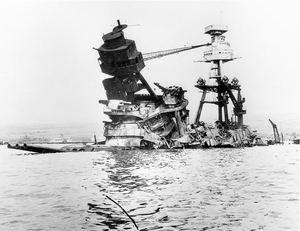
The battleship was the key strategic weapon of the late 19th and early 20th centuries. Large numbers of battleships were built by the major military powers, in particular Britain, France, Germany, Russia, Italy, Spain, Japan, and the United States. Due to the high cost of building and maintenance, most were eventually decommissioned. Only a handful of true battleships have been retained as historical objects today. However, many battleships still exist as sunken wrecks in various stages of decay in the oceans. While most of these ships have long been considered "lost", modern technology and historical interest has drawn more attention to them while they remain relatively intact.
By tradition and maritime law, sunken warships remain the property of the government of the nation that owned them.
Locations of sunken battleships

| Nearby modern landmark | Nautical location | Ocean | Ship name(s) |
|---|---|---|---|
| Avranches, Normandy, France | English Channel | Atlantic Ocean | HMS Centurion |
| Azores | Atlantic Ocean | São Paulo | |
| Bikini Atoll | Pacific Ocean | USS Arkansas (BB-33), Nagato | |
| Camperdown, Netherlands | North Sea | Atlantic Ocean | HMS Prince George |
| Cape Hatteras, United States | Atlantic Ocean | USS Virginia (BB-13), USS New Jersey (BB-16) | |
| Cape Helles, Gallipoli Peninsula, Turkey | Aegean Sea | Mediterranean Sea | HMS Goliath, HMS Majestic, Masséna |
| Cape Paderan, Vietnam | Pacific Ocean | Asahi | |
| Cape Trafalgar, Spain | Atlantic Ocean | HMS Britannia | |
| Cape Tres Forcas, Morocco | Mediterranean Sea | España | |
| Chesapeake Bay (Tangier Sound) | Atlantic Ocean | USS Texas | |
| Dardanelles | Mediterranean Sea | HMS Irresistible, HMS Ocean, Bouvet, Barbaros Hayreddin | |
| Donegal, Ireland | Atlantic Ocean | HMS Audacious | |
| Gaba Tepe, Gallipoli Peninsula, Turkey | Aegean Sea | Mediterranean Sea | HMS Triumph |
| Gulf of Mexico | Atlantic Ocean | USS Maine (ACR-1) | |
| Håkøy Island, near Tromsø, Norway | Atlantic Ocean | Tirpitz | |
| Jutland | North Sea | Atlantic Ocean | SMS Pommern |
| Kwajalein Atoll | Pacific Ocean | USS Pennsylvania (BB-38) | |
| Kuantan, Malaysia | South China Sea | Pacific Ocean | HMS Prince of Wales (53) |
| Lisbon, Portugal | Atlantic Ocean | Suffren | |
| Lundy Island, Britain | Bristol Channel | Atlantic Ocean | HMS Montagu |
| Lüshunkou, China | Yellow Sea | Pacific Ocean | Petropavlovsk, Yashima, Hatsuse, Sevastopol |
| Malta | Mediterranean Sea | HMS Cornwallis | |
| Sheerness in Medway River Estuary, Britain | North Sea | Atlantic Ocean | HMS Bulwark |
| Milos, Greece | Aegean Sea | Mediterranean Sea | Gaulois |
| Miyakejima, Japan | Pacific Ocean | Satsuma | |
| Nojimasaki, Japan | Pacific Ocean | Aki | |
| North Atlantic | Atlantic Ocean | Bismarck | |
| Okinawa | East China Sea | Pacific Ocean | Yamato |
| Oshima, Japan | Pacific Ocean | Mutsu | |
| Osmussaar Island | Baltic Sea | Atlantic Ocean | SMS Schleswig-Holstein |
| Ouistreham, France | English Channel | Atlantic Ocean | Courbet |
| Pacific Ocean | USS Oklahoma (BB-37) | ||
| Panama Bay, Panama | Pacific Ocean | USS Iowa (BB-4) | |
| Pearl Harbor, Oahu, Hawaii | Pacific Ocean | The wrecks of USS Arizona (BB-39) and USS Utah (BB-31) are located in Pearl Harbor.
The wrecks of USS New York (BB-34) and Nevada are located off Pearl Harbor. | |
| Pensacola Bay, Gulf of Mexico | Atlantic Ocean | USS Massachusetts (BB-2) | |
| Pentland Firth, North Sea | Atlantic Ocean | HMS King Edward VII | |
| Portland, Britain | English Channel | Atlantic Ocean | HMS Formidable, HMS Hood, HMS Empress of India |
| Port Said, Egypt | Mediterranean Sea | Peresvet | |
| Portsmouth, Britain | Atlantic Ocean | SMS Baden | |
| Premuda | Adriatic Sea | Mediterranean Sea | SMS Szent István |
| Pula | Adriatic Sea | Mediterranean Sea | SMS Viribus Unitis |
| Quiberon Bay, France | Atlantic Ocean | France | |
| Santander, Spain | Atlantic Ocean | Alfonso XIII | |
| Sardinia | Gulf of Asinara | Mediterranean Sea | Roma, Danton (south of Sardinia) |
| Scapa Flow | North Sea | Atlantic Ocean | HMS Royal Oak (08), HMS Vanguard, SMS König, SMS Kronprinz Wilhelm, SMS Markgraf |
| Sedd-al Bahr, Gallipoli Peninsula, Turkey | Aegean Sea | Mediterranean Sea | Masséna |
| Sibuyan Sea | Pacific Ocean | Musashi | |
| Sidi Barrani near Libyan Border | Mediterranean Sea | HMS Barham (04) | |
| Surigao Strait, Leyte Gulf | Pacific Ocean | Fusō, Yamashiro | |
| Świnoujście, Poland | Baltic Sea | Atlantic Ocean | SMS Schlesien |
| Toulon, France | Mediterranean Sea | SMS Prinz Eugen | |
| Tripoli, Lebanon | Mediterranean Sea | HMS Victoria | |
| Tsushima Island | Tsushima Strait, Korea Strait, Sea of Japan | Pacific Ocean | Navarin, Sissoi Veliky, Borodino, Oslyabya, Imperator Aleksandr III, Knyaz Suvorov, Admiral Ushakov |
| Valletta, Malta | Mediterranean Sea | HMS Russell | |
| Viborg | Gulf of Finland | Atlantic Ocean | Gangut |
| Virginia Capes | Atlantic Ocean | SMS Ostfriesland | |
| Bungo Channel | Pacific Ocean | Retvizan | |
| ? | Pacific Ocean | Iki | |
| ? | Pacific Ocean | Iwami | |
| ? | Atlantic Ocean | HMS Monarch |
The battleships listed are grouped according to how they came to be sunk in their final resting place. In each category, they are listed in chronological order by date sunk.
Sunk in combat
The following battleships were destroyed in full combat. These ships are considered war graves.
Navarin
Sunk after striking either one or two mines, or being torpedoed during the Battle of Tsushima on May 28, 1905.
- Navy:
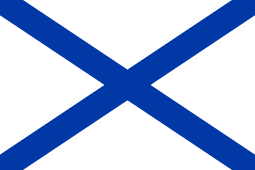 Russian Navy
Russian Navy - Casualties: 619 officers and men lost. Only three sailors were rescued after 4 days in the water.
- Location: Tsushima Strait, Sea of Japan
Sissoi Veliky
Scuttled by her crew after sustaining heavy damage during the Battle of Tsushima on May 28, 1905.
- Navy:
 Russian Navy
Russian Navy - Casualties: 59 men lost, rest POW.
- Location: Tsushima Strait, Sea of Japan
Oslyabya
Sunk at the Battle of Tsushima on May 28, 1905.
- Navy:
 Russian Navy
Russian Navy - Casualties: 515 men lost, with 250 survivors rescued
- Location: Tsushima Strait, Sea of Japan
Borodino
Sunk at the Battle of Tsushima on May 28, 1905.
- Navy:
 Russian Navy
Russian Navy - Casualties: 865 officers and men lost, only one sailor survived
- Location: Tsushima Strait, Sea of Japan
Imperator Aleksandr III
Sunk at the Battle of Tsushima on May 28, 1905.
- Navy:
 Russian Navy
Russian Navy - Casualties: 867 officers and men lost; no survivors
- Location: Tsushima Strait, Sea of Japan
Knyaz Suvorov
Sunk at the Battle of Tsushima on May 28, 1905.
- Navy:
 Russian Navy
Russian Navy - Casualties: 935 officers and men lost
- Location: Tsushima Strait, Sea of Japan
Admiral Ushakov
Sunk at the Battle of Tsushima on May 29, 1905.
- Navy:
 Russian Navy
Russian Navy - Casualties: 94 men lost, with 328 survivors rescued
- Location: Tsushima Strait, Sea of Japan
HMS Irresistible

Struck a mine on March 18, 1915, while participating in the final attempt to force the Dardanelles straits.
- Navy:
 Royal Navy
Royal Navy - Casualties: Very few
- Location: In the Dardanelles straits, Turkey
- Condition: Reported to have been heavily salvaged and scavenged, with ship remains scattered.
HMS Ocean
Struck a mine and also hit by shore batteries March 18, 1915, while participating in the final attempt to force the Dardanelles straits.
- Navy:
 Royal Navy
Royal Navy - Location: In the Dardanelles straits, Turkey
- Condition: Reported to have been heavily salvaged and scavenged, with ship remains scattered.
Bouvet
Struck a mine and also hit by shore batteries March 18, 1915, while participating in the final attempt to force the Dardanelles straits.
- Navy:
 Marine Nationale
Marine Nationale - Casualties: Over 600 men
- Location: In the Dardanelles straits, Turkey
- Condition: Rests at 70 meters, only her propellers were salvaged.
HMS Goliath
Torpedoed by Ottoman torpedo boat Muâvenet-i Millîye on May 13, 1915, while supporting the Battle of Gallipoli.
- Navy:
 Royal Navy
Royal Navy - Casualties: 570 men out of a crew of 700
- Location: Near Cape Helles, Gallipoli Peninsula, Turkey
- Condition: Reported to have been heavily salvaged and scavenged, with ship remains scattered.
SMS Pommern
Torpedoed by destroyer HMS Faulknor during Battle of Jutland on June 1, 1916. The torpedo hit was followed by a massive explosion in one of her magazines, and the ship broke apart and sank quickly.
- Navy:
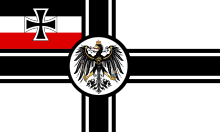 Kaiserliche Marine
Kaiserliche Marine - Casualties: All hands, 839 men.
- Location: North Sea
- Condition: Reported to have been heavily salvaged.
- Relics: The bow ornament is now in the Laboe Naval Memorial.
Bismarck

Sunk on May 27, 1941 following an extensive naval battle against British battleships, aircraft, cruisers, destroyers, and aircraft carriers. Heavily shelled by battleships and cruisers, and also torpedoed by aircraft and destroyers. The German survivors reported that the heavily damaged ship was finally scuttled to prevent capture.
- Navy:
.svg.png) Kriegsmarine
Kriegsmarine - Casualties: Almost 2100 men lost, with 115 survivors
- Location: North Atlantic
- Condition: Upright in 15,500 feet (4,700 m) of water and in surprisingly good condition.
- Official War Grave
USS Arizona

Destroyed by Japanese aerial bombing on December 7, 1941 during the attack on Pearl Harbor.
- Navy:
 United States Navy
United States Navy - Location: Pearl Harbor, Oahu, Hawaii
- Casualties: 1,177 dead out of 1,400 crewmen
- Status: Official war grave site with the premier Pearl Harbor memorial built over the sunken hull. Still an active grave site, eligible Pearl Harbor veterans continue to be interred within the hull.
- Condition: The Arizona was partially salvaged, with removal of almost all the superstructure, turrets, and guns. Following salvage and removal, the remaining hull is completely submerged, with the exception of one barbette, part of a mast, and the cutaway sides of one turret. Since the hull contains thousands of gallons of fuel oil, the hull corrosion rate is being actively studied.
- Relics: A section of the boat deck has been placed at Waipio Point, Oahu, Hawaii. This amidships section had served as a ceremonial platform on the wreck but was cut away to make room for the overlying memorial. One of the ship's bells is at the University of Arizona, and its anchor sits on the grounds of the Arizona State Capitol.
USS Utah

Destroyed by Japanese aerial torpedoes on December 7, 1941 during the attack on Pearl Harbor. The Utah had been downgraded from a battleship and converted to a combined gunnery training ship and radio-controlled target ship. It has been speculated that Japanese planners had assigned the Utah a low priority as a target, but that the extensive wooden planking covering the Utah's decks had misled Japanese pilots into believing that the ship was a high-priority aircraft carrier.
- Navy:
 United States Navy
United States Navy - Casualties: 58 dead and 461 survivors
- Location: Pearl Harbor, Oahu, Hawaii
- Status: Official war grave site with small memorial nearby on Ford Island.
- Condition: The Utah was capsized during the attack, and was partially salvaged but not recovered. The wreck was later partially righted and pulled closer to shore and away from the channel. The wreck is almost completely submerged, with a small amount of highly corroded superstructure visible above the surface.
HMS Prince of Wales
HMS Prince of Wales was attacked and sunk by aerial torpedoes from Japanese aircraft off the coast of Malaya on December 10, 1941, while deployed in defense of Singapore. The battlecruiser HMS Repulse was sunk in the same engagement. The Prince of Wales was the first battleship to be sunk by aircraft while at sea and under fire.
- Navy:
 Royal Navy
Royal Navy - Casualties: 327 dead out of 1,612 crewmen
- Location: Near Kuantan in Malaysia
- Status: Official war grave site.
- Condition: Upside down in 150 feet (46 m) of water.
- Relics: The ship's bell was recovered, restored, and is now displayed in the Merseyside Maritime Museum in Liverpool.
Roma
The first capital ship to be sunk by guided missiles. Destroyed by German bomber-launched Fritz X guided bombs on September 9, 1943, while en route to surrender to the Allies.
- Navy:
_crowned.svg.png) Regia Marina
Regia Marina - Loss: 1,393 killed and 622 survivors
- Location: Near Sardinia in Mediterranean Sea
Hiei
Scuttled after heavy damage by naval gunfire and aerial attacks during the Naval Battle of Guadalcanal 14 November 1942.
- Navy:
 Imperial Japanese Navy
Imperial Japanese Navy - Casualties: 188
- Location: Off Guadalcanal, Solomon Islands
Kirishima
Sunk by gunfire during the Naval Battle of Guadalcanal 15 November 1942.
- Navy:
 Imperial Japanese Navy
Imperial Japanese Navy - Casualties: 212
- Location: Off Guadalcanal, Solomon Islands
- Condition: Located in 1992 by Robert Ballard, the wreck lies bottom up in 3500 feet (1067 m) of water. The bow section is missing, probably destroyed by a magazine explosion after she sank; the tip of the stern is also gone.[1]
Scharnhorst
Though classified by the Germans as a battleship, some argue the Scharnhorst and her sister ship represent the ultimate example of the German theory of battlecruiser design. On a platform with high-speed machinery and battleship-class armor, the Germans installed guns that were smaller than contemporary battleships. However, this was not due to a desire to reduce weight to increase speed, it was due to the Versailles Treaty, which limited German production of 15" guns to one per year.
Destroyed by gunfire and torpedoes from a British task force off the coast of Norway on December 26, 1943 during the Battle of North Cape.
- Navy:
.svg.png) Kriegsmarine
Kriegsmarine - Casualties: Only 36 survivors out of 1,968 men
- Location: Arctic Ocean, approximately 66 miles (106 km) off the North Cape of Norway.
- Status: Official war grave site.
- Condition: The Scharnhorst lies upside down in 900 feet (270 m) of water.
Musashi

Sunk by 17 bombs and 19 torpedoes by many dozens of US aircraft during the Battle of the Sibuyan Sea. A large number of the entire American attack force of around 250 planes generally concentrated on Musashi rather than other ships in the force. This concentration allowed for an unheard of number of hits against one ship which overwhelmed this huge armored vessel. In total, 18 US aircraft were lost overall in the attack.
- Navy:
 Imperial Japanese Navy
Imperial Japanese Navy - Casualties: 1,376 survivors out of 2,399 men
- Condition: Hull blown apart by underwater explosions
- Location: Sibuyan Sea, Philippines
Fusō
Destroyed along with her sister ship Yamashiro on October 25, 1944, at the Battle of Surigao Strait. Split in half after being torpedoed by US destroyers. The bow section was sunk by gunfire from the USS Louisville.
- Navy:
 Imperial Japanese Navy
Imperial Japanese Navy - Casualties: No known survivors out a crew of approximately 1,400 officers and men. After the sinking, survivors refused rescue by US warships. Some were rumored to have been rescued by Asagumo, and all rescued were killed when the destroyer sank. Any survivors who successfully swam to the nearby island were likely killed by Philippine inhabitants resisting Japanese occupation. Some believe that Fusō became the largest warship of all nations to be sunk with all hands.
- Location: Near Kanihaan Island, Surigao Strait, Pacific Ocean
Yamashiro
Destroyed along with her sister ship Fusō on October 25, 1944, at the Battle of Surigao Strait. Wrecked first by gunfire from US battleships, her hull was sunk after being torpedoed by US destroyers.
There is some discussion among historians about the small possibility that the positions and roles of the sister ships Fusō and Yamashiro were reversed during their last battle. The Battle of Surigao Strait was fought at night and at some distance between the battleship combatants. There were very few Japanese survivors. To date, there has been no scientific survey of the wrecks that would resolve the debate.
- Navy:
 Imperial Japanese Navy
Imperial Japanese Navy - Loss: 10 survivors out of approximately 1,400 men.
- Location: Surigao Strait, Pacific Ocean
Tirpitz
.jpg)
Sunk on November 12, 1944 by the Royal Air Force using special 5-ton bombs. Near the wreck-site there are artificial lakes along the shore formed from bomb craters from the giant Tallboy bombs that missed their target.
- Navy:
.svg.png) Kriegsmarine
Kriegsmarine - Casualties: Approximately 1000 men lost, with approximately 700 survivors
- Location: Håkøybotn Bay, Norway
- Condition: Only the bow remains after most of the ship was raised and scrapped after the war.
- Relics: Sections of armor plates are still used by the Norwegian Road Authority as temporary road surface material during roadwork. Additionally, a large chunk of the armor plating is held at the Royal Naval museum in Gosport, Hampshire.
Yamato
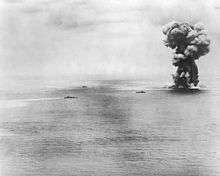
Destroyed while on a one-way mission to interdict American landings on Okinawa. Torpedoed and bombed by US carrier-based aircraft on April 7, 1945. Lies East China Sea north of Okinawa
- Navy:
 Imperial Japanese Navy
Imperial Japanese Navy - Casualties: 280 survivors out of approximately 2,778 men
- Location: East China Sea
- Condition: Broken in two and resting in 1,400 feet (430 m) of water. The bow section is upright and the main section upside down.
- Relics: 18-inch ammunition is displayed at the Yasukuni Shrine. Some small relics have been collected from the wreck by remote-control submarines.
Sunk by torpedoes or mines
The following battleships were destroyed in wartime, but struck below the waterline with torpedoes fired by submarines or mines. These ships are considered war graves.
Petropavlovsk
Sunk after striking a mine on April 13, 1904, early in the Russo-Japanese war.
- Navy:
 Russian Navy
Russian Navy - Casualties: 650 officers and men lost. 80 survivors. Ship sank in 2 minutes.
- Location: Off Port Arthur (modern Lüshunkou), Yellow Sea
Yashima
Struck a Russian mine on May 15, 1904 during the Russo-Japanese War.
- Navy:
 Imperial Japanese Navy
Imperial Japanese Navy - Location: Off Port Arthur, China
- Relics: A highly detailed builder's model still survives and is currently on display at the Royal Hospital School Holbrook in Suffolk, England.
Hatsuse
Struck two Russian mines on May 15, 1904 during the Russo-Japanese War.
- Navy:
 Imperial Japanese Navy
Imperial Japanese Navy - Casualties: 38 officers and 458 men lost, with 23 officers and 313 men surviving
- Location: Off Port Arthur, China
HMS Audacious
Struck a mine on October 27, 1914, becoming the first British battleship sunk in World War I.
- Navy:
 Royal Navy
Royal Navy - Casualties: None from the HMS Audacious, though a crewman of the HMS Liverpool was struck and killed by debris from an explosion on Audacious.
- Location: Off Donegal, Ireland
- Condition: Upside down in 210 feet (64 m) of water. Large openings blown in the hull from magazine explosions and the mine.
HMS Formidable
Torpedoed by U-boat on January 1, 1915, while participating in gunnery exercises in the English Channel.
- Navy:
 Royal Navy
Royal Navy - Casualties: 547 dead out of 780 men
- Location: Near Portland in the English Channel
- Status: Official war grave site.
HMS Triumph
Torpedoed by U-21 on May 25, 1915, while supporting the Battle of Gallipoli.
- Navy:
 Royal Navy
Royal Navy - Casualties: 73 dead out of 700 men
- Location: Near Gaba Tepe, Gallipoli Peninsula, Turkey
- Condition: Reported to have been heavily salvaged and scavenged, with ship remains scattered.
HMS Majestic

Torpedoed by U-21 on May 27, 1915, while supporting the Battle of Gallipoli.
- Navy:
 Royal Navy
Royal Navy - Casualties: 49 men
- Location: Near Cape Helles, Gallipoli Peninsula, Turkey
- Condition: Reported to have been heavily salvaged and scavenged, with ship remains scattered.
Barbaros Hayreddin - previously SMS Kurfürst Friedrich Wilhelm
Torpedoed by British submarine HMS E11 on August 8, 1915.
- Navy:
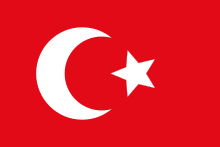 Ottoman Navy
Ottoman Navy - Casualties: 253 men
- Location: Dardanelles, Turkey
HMS King Edward VII
Struck a mine on January 6, 1916 laid by SMS Moewe.
- Navy:
 Royal Navy
Royal Navy - Location: In Pentland Firth on the northern coast of Scotland
- Condition: Upside down in 350 feet (110 m) of water. In generally good condition.
HMS Russell
Struck a mine on April 27, 1916.
- Navy:
 Royal Navy
Royal Navy - Casualties: 120 men
- Location: Off Grand Harbour of Valletta, Malta in Mediterranean Sea.
- Condition: Upside down in 350 feet (110 m) of water. In generally good condition.
Suffren
Destroyed by U-52 with a dramatic torpedo hit in a magazine on November 26, 1916.
- Navy:
 Marine Nationale
Marine Nationale - Loss: All hands, 648 men
- Location: Off Lisbon in the Atlantic Ocean.
Gaulois
Torpedoed by UB-47 on December 27, 1916.
- Navy:
 Marine Nationale
Marine Nationale - Location: Between the islands of Milos and Kythira in the Aegean Sea.
Peresvet - later Sagami – later cruiser Peresvet

Sunk twice by two different enemies. First sunk at her moorings by Japanese Army artillery during the Siege of Port Arthur. Raised and repaired by the Japanese and incorporated into the Imperial Japanese Navy as the Sagami. Purchased by Russia in April 1916 and renamed Peresvet. She was due to be the ship of the Russian Arctic Sea Flotilla but was sunk a second time while en route by mines laid by the U-73 outside Port Said, Egypt on 4 January 1917.
- Navy:
 Russian Navy
Russian Navy - Casualties (1917): 261 officers and men lost.
- Location: Off Port Said, Egypt, in Mediterranean Sea.
HMS Cornwallis
Torpedoed by U-32 on January 9, 1917.
- Navy:
 Royal Navy
Royal Navy - Casualties: 15 men
- Location: Off Malta in Mediterranean Sea.
Danton
Torpedoed by U-64 on March 19, 1917.
- Navy:
 Marine Nationale
Marine Nationale - Loss: Some reports indicate 396 crew lost and with 806 survivors. Other reports reverse the figures.
- Location: 30 miles (48 km) south of Sardinia in Mediterranean Sea.
SMS Viribus Unitis
Sunk by limpet mines attached by Italian frogmen riding manned torpedoes on November 1, 1918.
- Navy:
 State of Slovenes, Croats and Serbs Navy
State of Slovenes, Croats and Serbs Navy - Casualties: Approximately 300 men
- Location: Pula, Adriatic Sea
- Condition: Partially salvaged, some parts remain on the bottom.
SMS Szent István
Sunk by two torpedoes launched from the Italian MAS-15 Motor Torpedo Boat on June 10, 1918 while on sortie in the Adriatic Sea.
- Navy:
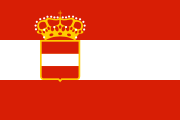 Austro-Hungarian Navy
Austro-Hungarian Navy - Casualties: 89 men
- Location: Near the island of Premuda, Adriatic Sea
- Condition: Upside down in 200 feet (61 m) of water
- Relics: Brass name plate and other relics on display in a museum in Pula.
HMS Britannia
Torpedoed by SM UB-50 on November 9, 1918. The second last Royal Navy vessel to be sunk during World War I.
- Navy:
 Royal Navy
Royal Navy - Casualties: 51 men
- Location: Off Cape Trafalgar
Alfonso XIII
Causing confusion among some historians, Alfonso XIII was renamed España after her sister ship España ran aground and sank off Morocco in 1923. Struck a mine and sank within three hours in the late afternoon on April 30, 1937 during the Spanish Civil War. The mine was initially believed to be laid by the Republican side, but a number of sources now believe it to be a Nationalist mine which the Alfonso XIII (España) struck by accident.
- Navy:
 Spanish Navy (Nationalist Navy)
Spanish Navy (Nationalist Navy) - Casualties: five men
- Location: Off Santander, Spain
HMS Royal Oak
Torpedoed by U-47 on October 14, 1939, with loss of 833 men.
- Navy:
 Royal Navy
Royal Navy - Casualties: Over 800 men
- Location: Scapa Flow
- Status: Official war grave site.
- Condition: Upside down in 100 feet (30 m) of water. In relatively good condition. The presence of hundreds of thousands of gallons of fuel oil led to a special recovery effort to remove the leaking oil to prevent a major environmental problem. The presence of a large amount of deteriorated high explosive has been of concern.
- Relics: The ship's bell is the centerpiece to a memorial at St Magnus' Cathedral in Kirkwall.
HMS Barham
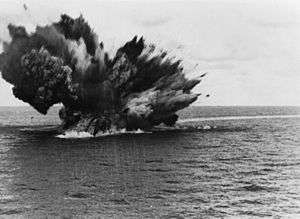
Torpedoed by U-331 on November 25, 1941, while steaming to cover an attack on Italian convoys.
- Navy:
 Royal Navy
Royal Navy - Casualties: 862 dead and 296 survivors
- Location: Off Egyptian coast in Mediterranean Sea
Asahi
Torpedoed by USS Salmon on May 25, 1942. This early British-built pre-Dreadnought had been repeatedly converted into other ship types, and was serving as a transport.
- Navy:
 Imperial Japanese Navy
Imperial Japanese Navy - Casualties: 16 men lost and 583 survivors
- Location: Off Cape Paderan, Vietnam
Kongō
Torpedoed by USS Sealion on November 21, 1944. The first super-dreadnought type battlecruiser of the Imperial Japanese Navy, and upgraded to a battleship rating in the 1930s. Kongō was the only battleship sunk by a submarine in the Pacific War, and the last battleship ever sunk by a submarine.
- Navy:
 Imperial Japanese Navy
Imperial Japanese Navy - Casualties: About 1250 men lost and 237 survivors
- Location: Taiwan Strait
Other ships
The Chilean battleship Almirante Cochrane, under construction, was purchased by the British, completed as an aircraft carrier, and christened HMS Eagle. She was torpedoed by U-73 and sunk near Majorca.
The Japanese Yamato-class battleship Shinano was converted to and completed as a super-carrier. While en route from her builder's yard at Yokosuka to Kure for outfitting, she was torpedoed and sunk by USS Archer-Fish.
Lost at sea
The following battleships were lost at sea for reasons other than combat.
HMS Victoria
Rammed and sunk by HMS Camperdown in one of the most famous warship collisions in history on June 22, 1893.
- Navy:
 Royal Navy
Royal Navy - Casualties: 358 dead and 357 survivors
- Location: Mediterranean Sea off Tripoli, Lebanon
- Condition: Most unusually, HMS Victoria stands vertically with her bow and three quarters of her length buried in the mud and her stern pointing directly upwards towards the surface. The unusual attitude of this wreck is thought to have been due to the heavy ram in the bow, the heavy single turret forward, and the still-turning propellers driving the wreck downwards in the mud.
Gangut
Sank on June 12, 1897 after hitting an uncharted pinnacle rock.
- Navy:
 Russian Navy
Russian Navy - Casualties: None
- Location: Near Björkö in the Gulf of Finland.
HMS Montagu
Ran aground and amongst rocks in fog due to poor navigation on May 30, 1906. The ship could not be pulled off the rocks, so was stripped and abandoned in place.
- Navy:
 Royal Navy
Royal Navy - Location: Off the island of Lundy, England
- Condition: Time and tide have broken up the ship. The waters offshore are reported to be full of armor plate sections and 12-inch (300 mm) ammunition.
HMS Bulwark
Destroyed by an ammunition and magazine explosion on November 26, 1914.
- Navy:
 Royal Navy
Royal Navy - Casualties: 14 survivors out of 750 crewmen
- Location: Estuary of River Medway in Kent, England
- Status: Official war grave site.
- Condition: Ship was heavily destroyed at the time of the explosion.
HMS Vanguard
Destroyed by a magazine explosion on July 9, 1917.
- Navy:
 Royal Navy
Royal Navy - Casualties: 2 survivors and 843 dead
- Location: Scapa Flow
- Status: Official war grave site.
- Relics: A porthole is displayed in the Scapa Flow Visitor Centre and Museum at Lyness.
HMS Prince George
Ran aground while in tow on the way to be broken up on December 28, 1921. Stripped and left in place as a breakwater.
- Navy:
 Royal Navy
Royal Navy - Location: Just off the beach at Camperdown, Netherlands
- Condition: Awash in the surf and clearly visible from shore.
France
Capsized and sank on August 26, 1922, after being sliced open by an uncharted rock in a well-travelled bay. Heavily salvaged and then abandoned.
- Navy:
 Marine Nationale
Marine Nationale - Location: In Quiberon Bay
- Condition: Heavily salvaged, only some leftover materials remain.
España
Ran aground in fog off the coast of Morocco on August 28, 1923. Stripped and abandoned in place.
- Navy:
 Spanish Navy
Spanish Navy - Location: Cape Tres Forcas, Morocco
Mutsu
Destroyed by an unexplained magazine explosion on June 8, 1943.
- Navy:
 Imperial Japanese Navy
Imperial Japanese Navy - Casualties: Approximately 1,100 men lost and 350 survivors
- Location: Off Oshima, Japan
- Condition: Upside down in 135 feet (41 m) of water. Wreck was extensively salvaged in the 1970s.
- Relics: Many artifacts are displayed at the Mutsu Memorial Museum in Tôwa Chô on Oshima Island. A main gun, anchor, propellor, and rudder are displayed in a Brick Park at Kure. The complete number 4 turret is on display at the former naval academy at Etajima, while one of the 140 mm secondary guns is displayed at the Yasukuni Shrine in Tokyo. One 16-inch (410 mm) gun is on display at the Museum of Maritime Science, Shinigawa, Tokyo.
USS Oklahoma
Destroyed by Japanese aerial torpedoes on December 7, 1941 during the surprise air raid on Pearl Harbor. The Oklahoma remained as a capsized wreck in Pearl Harbor for over a year. Following a herculean engineering effort, the hull of the Oklahoma was righted and refloated to help clear the harbor. The decision was made to scrap the ship, and the hulk was being towed to San Francisco in 1947 when it sank at sea.
- Navy:
 United States Navy
United States Navy - Location: Pacific Ocean, approximately 500 miles (800 km) from San Francisco Bay. Exact location unknown.
- Relics: An anchor is displayed in downtown Oklahoma City, only a few blocks from the memorial park at the site of the Alfred P. Murrah Federal building.
São Paulo
While being towed across the Atlantic to be scrapped in Britain in 1951, the tow lines snapped in a gale, and the ship was never seen again.
- Navy:
 Brazilian Navy
Brazilian Navy - Location: Atlantic Ocean, approximately 150 miles (240 km) from the Azores. Exact location unknown.
Scuttled in shallow water
The following battleships were intentionally sunk while not engaged in battle.
Sevastopol
Scuttled in 1904 during the Siege of Port Arthur, to prevent the ship falling into Japanese hands.
- Navy:
 Russian Navy
Russian Navy - Location: White Wolf Bay, near Lüshun, China
USS Maine
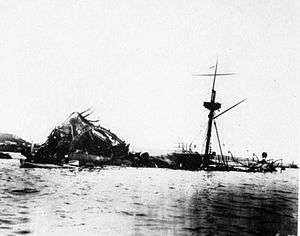
The second US battleship, the Maine was destroyed in Havana harbor on February 15, 1898 by a mysterious explosion. At the time, this was believed to have been caused by a Spanish attack using a mobile mine, which precipitated the Spanish–American War. Subsequent work by Rickover (How the Battleship Maine Was Destroyed) suggests an ordnance explosion caused by fire in the coal on board may have been responsible. After years as a wreck and navigational hazard, the wreck was refloated, investigated, towed out to sea, and sunk with ceremony in 1912.
- Navy:
 United States Navy
United States Navy - Location: Gulf of Mexico
- Relics: The foremast serves as a memorial at the US Naval Academy in Annapolis, Maryland. The mainmast is part of the USS Maine Mast Memorial in Arlington National Cemetery. The bow shield and scroll decorations serve as part of a memorial in Bangor, Maine. One gun overlooks the harbor in Portland, Maine. One anchor was moved to City Park in Reading, Pennsylvania. A memorial cast from remnants of the Maine, together with a mortar shell, commemorates a former University of Notre Dame student, John Henry Shillington, who died in the explosion. The midship 6-inch (150 mm) guns are on outdoor display at the Washington Navy Yard and Naval Station Anacostia. A piece of armor plating is mounted on a display at Seaside Park in Bridgeport, CT. The base of the conning tower is in Memorial Park in Canton, Ohio, near the McKinley Tomb.
HMS Hood
Scuttled in Portland Harbour, England on November 4, 1914 to block the Southern Ship Channel from penetration by U-boats or torpedoes.
- Navy:
 Royal Navy
Royal Navy - Location: Portland Harbour
- Condition: Upside down in 60 feet (18 m), forming part of a breakwater.
Masséna
Scuttled off the Gallipoli Peninsula on November 10, 1915 to form a breakwater.
- Navy:
 Marine Nationale
Marine Nationale - Location: Off Sedd-al Bahr, near Cape Helles at the end of the Gallipoli Peninsula
SMS König
Scuttled by her crew at Scapa Flow on June 21, 1919 while interned at the end of World War I.
- Navy:
 Kaiserliche Marine
Kaiserliche Marine - Location: Scapa Flow, Orkney Islands, North Sea
- Condition: Upside down in 120 feet (37 m) of water. The hull has been blasted open to enable past salvage operations.
SMS Kronprinz Wilhelm
Scuttled by her crew at Scapa Flow on June 21, 1919 while interned at the end of World War I.
- Navy:
 Kaiserliche Marine
Kaiserliche Marine - Location: Scapa Flow, Orkney Islands, North Sea
- Condition: Upside down in 120 feet (37 m) of water. The hull has been blasted open to enable past salvage operations.
SMS Markgraf
Scuttled by her crew at Scapa Flow on June 21, 1919 while interned at the end of World War I.
- Navy:
 Kaiserliche Marine
Kaiserliche Marine - Location: Scapa Flow, Orkney Islands, North Sea
- Condition: Upside down in 130 feet (40 m) of water. The hull has been blasted open to enable past salvage operations.
Rostislav
Scuttled on November 16, 1920 by the White Forces during the Russian Civil War to block the Kerch Strait. The wreckage was later raised and scrapped.
- Navy:
 Russian Navy
Russian Navy - Location: Black Sea, Kerch Strait
HMS Centurion
Scuttled of the coast of Normandy on June 7, 1944 as a blockship to protect one of the artificial harbors installed as part of the D-Day invasion.
- Navy:
 Royal Navy
Royal Navy - Location: Off Avranches, Normandy, France
Courbet
Scuttled of the coast of Normandy on June 9, 1944 as a blockship to protect one of the artificial harbors installed as part of the D-Day invasion.
- Navy:
 Marine Nationale
Marine Nationale - Location: Off Ouistreham, Normandy, France
Gneisenau

The target of frequent and massive Allied bombing raids, Gneisenau was eventually decommissioned and scuttled as a blockship in Gotenhafen. Later raised and scrapped.
- Navy:
.svg.png) Kriegsmarine
Kriegsmarine - Relics: One main turret was converted to a coastal artillery placement in Ørland, Norway, where it still exists as a museum. Parts of the guns from another main turret are on display in the Netherlands. Two twin 15 cm turrets from her secondary armament still exist in Denmark near Rødvig.
SMS Schlesien
Scuttled at Swinemünde on May 4, 1945, to prevent capture by the Soviets. Used as a stationary target by the Soviet military. Later partially salvaged.
- Navy:
.svg.png) Kriegsmarine
Kriegsmarine - Location: Baltic Sea at Świnoujście, Poland
- Condition: Portions of the wreck were reported to still be visible as late as the 1980s.
SMS Schleswig-Holstein
Sunk twice near the end of World War II. Bombed and sunk in shallow water in Gdynia on December 19, 1944. Raised and moved by the Soviets, she was eventually scuttled again and served as a stationary target for the Soviet military.
- Navy:
.svg.png) Kriegsmarine
Kriegsmarine - Location: Near Osmussaar Island in the Baltic Sea
- Condition: Portions of the wreck are reported to still exist.
- Relics: Ship's bell reported to be displayed at the German Army Museum in Dresden.
Expended as targets
The following battleships were intentionally sunk as targets. While cheaper disposable targets were conventionally used to maintain crew proficiencies, destructive testing was commonly used to validate theories about armor, ammunition, or tactics in real circumstances.
USS Texas
- The first US battleship, the Texas was a victorious veteran of the Spanish–American War. Converted to a bombardment target and renamed the San Marcos, she was sunk in 1911 by other US battleships, including the USS Kansas.
- Navy:
 United States Navy
United States Navy - Location: Tangier Sound, Chesapeake Bay
- Condition: After several ships struck the wreck during the 1950s, explosives were used to reduce its height, and what remains today is a mass of jumbled wreckage.
HMS Empress of India
Sunk as a gunnery target in 1913.
- Navy:
 Royal Navy
Royal Navy - Location: Lyme Bay near Portland Bill
- Condition: Upside down in 150 feet (46 m). Generally in good condition, though a large opening in the hull was made to salvage engine room equipment.
Hoche
Sunk as a target on November 25, 1913.
- Navy:
 Marine Nationale
Marine Nationale
Iki - previously Imperator Nikolai I
Built as the Russian Imperator Nikolai I, but captured by the Japanese. Expended as a gunnery target and sunk by the battlecruisers Kongō and Hiei on October 3, 1915.
- Navy:
 Imperial Japanese Navy
Imperial Japanese Navy - Location: ?
USS Massachusetts
- Converted to a static target, she was scuttled in 1921 off Fort Pickens, from which she was bombarded for years. Designated an artificial reef in 1993.
- Navy:
 United States Navy
United States Navy - Location: Fort Pickens State Aquatic Preserve, Pensacola Bay, Florida
- Condition: Right side up on bottom in shallow water. Surprisingly intact considering location and history. Tops of gun turrets awash in swells.
SMS Ostfriesland

- Sunk by aerial bombing on July 21, 1921 as part of Billy Mitchell's demonstration of airpower against seapower.
- Navy:
 Kaiserliche Marine
Kaiserliche Marine - Location: Atlantic Ocean about 60 miles (97 km) off the Virginia Capes
- Condition: Ostfriesland lies upside down in 380 feet (116 m) of water.
SMS Baden
Her crew attempted to scuttle her at Scapa Flow on June 21, 1919, but she was beached and saved by the British. Converted by the British into a target, she was subjected to a carefully studied series of bombardment tests, and finally sunk by British battleships.
- Navy:
 Kaiserliche Marine
Kaiserliche Marine - Location: Off Portsmouth in 600 feet (180 m) of water
SMS Prinz Eugen
Transferred to France at the end of World War I as a war prize. Used by the French as an aircraft target and for destructive underwater testing. Finally sunk as a gunnery target on June 28, 1922 by the French battleships France, Jean Bart, and Paris.
- Navy:
 Austro-Hungarian Navy
Austro-Hungarian Navy - Location: Near Toulon
USS Iowa
Converted to the first radio-controlled target ship, she was sunk by the USS Mississippi in 1923.
- Navy:
 United States Navy
United States Navy - Location: Panama Bay, Panama
USS Virginia
Converted to a target for aerial bombing tests, she was sunk as part of Army Air Corps bombing exercises in 1923.
- Navy:
 United States Navy
United States Navy - Location: Off Cape Hatteras, North Carolina
USS New Jersey
Converted to a target for aerial bombing tests, she was sunk as part of Army Air Corps bombing exercises in 1923.
- Navy:
 United States Navy
United States Navy - Location: Off Cape Hatteras, North Carolina
Hizen - previously Retvizan
Sunk at least twice while serving in two different navies. Originally built in the United States for the Russian Imperial Navy as the Retvizan. She was present at the Battle of Port Arthur where she was torpedoed by Japanese destroyers, ran aground and later repaired. After suffering moderate damage during the Battle of the Yellow Sea, she became trapped in Port Arthur and sunk at her moorings by Japanese army artillery on 6 December 1904, during the Siege of Port Arthur.
Retvizan was raised by the Japanese, repaired, and renamed Hizen. She served in the Imperial Japanese Navy during World War I, was retired in 1923 and sunk as a target in 1924.
- Navy:
 Imperial Japanese Navy
Imperial Japanese Navy - Location: Bungo Channel, Japan
Iwami - previously Oryol
Originally built by the Russian Imperial Navy as the Oryol. She was present at the Battle of Tsushima where she was lightly damaged by gunfire. Oryol was captured by the Japanese, repaired, improved, and renamed Iwami. She served in the Imperial Japanese Navy during World War I, was retired in 1923 and sunk as a target on July 10, 1924. Oryol was the last battleship to surrender on the high seas.
- Navy:
 Imperial Japanese Navy
Imperial Japanese Navy - Location: ?
Aki
Expended in compliance with the Washington Naval Treaty on September 7, 1924. Sunk by gunfire from the Nagato and Mutsu in the presence of Crown Prince and all the Japanese military heads.
- Navy:
 Imperial Japanese Navy
Imperial Japanese Navy - Location: Off Nojimasaki, southern Boso Peninsula, Chiba
Satsuma
Expended in compliance with the Washington Naval Treaty on September 7, 1924. Sunk by gunfire from the Kongō and Hyūga.
- Navy:
 Imperial Japanese Navy
Imperial Japanese Navy - Location: Northeast of Miyakejima
HMS Monarch
Converted to a target ship and sunk as a gunnery target by HMS Revenge on January 20, 1925.
- Navy:
 Royal Navy
Royal Navy - Location: 50 miles south of the Scilly Isles
USS Arkansas

Converted to a target for atomic bombing tests in Bikini Atoll, she survived an aerial atomic bomb test but was sunk following a submerged atomic bomb test on July 25, 1946.
- Navy:
 United States Navy
United States Navy - Location: Bikini Atoll
Nagato
Converted to a target for atomic bombing tests in Bikini Atoll, she survived an aerial atomic bomb test but was sunk following a submerged atomic bomb test on July 25, 1946.
- Navy:
 Imperial Japanese Navy
Imperial Japanese Navy - Location: Bikini Atoll
USS Pennsylvania
Converted to a target for atomic bombing tests in Bikini Atoll, she survived both the aerial atomic bomb test and the submerged atomic bomb test in 1946. She was towed to Kwajalein Lagoon for studies, and sunk off Kwajalein Atoll in 1948.
- Navy:
 United States Navy
United States Navy - Location: Off Kwajalein Atoll, Marshall Islands
USS New York
Converted to a target for atomic bombing tests in Bikini Atoll, she survived both the aerial atomic bomb test and the submerged atomic bomb test in 1946. She was towed back to Pearl Harbor, and sunk following a massive assault by ships and planes in 1948.
- Navy:
 United States Navy
United States Navy - Location: Off Pearl Harbor, Oahu, Hawaii
- Relics: One of the propellors is on display beside the museum ship USS Texas, which is preserved in a memorial park near Houston, Texas.
USS Nevada
Heavily bombed during the Attack on Pearl Harbor, she was beached by her crew. Had long war-time service history after being repaired. Converted to a target for atomic bombing tests in Bikini Atoll, she survived both the aerial atomic bomb test and the submerged atomic bomb test in 1946. She was towed back to Pearl Harbor, and sunk by gunfire and aerial torpedoes in 1948.
- Navy:
 United States Navy
United States Navy - Location: Off Pearl Harbor, Oahu, Hawaii
Sunk and later salvaged
The following battleships were sunk, but were later salvaged and scrapped.
Poltava - later Tango and Chesma
Built as the Russian pre-dreadnought Poltava, she fought in the Battle of the Yellow Sea, but failed to escape and was scuttled during the Siege of Port Arthur. Salvaged after the war in October 1905, she was refloated, repaired, and taken into service in the Imperial Japanese Navy as the Tango. Purchased by the Russians during World War I and renamed Chesma. She was later captured by the British during the Allied invasion of northern Russia during the Russian Civil War. Scrapped in 1923.
- Navy:
 Russian Navy
Russian Navy
Pobeda - later Suwo
Built as the Russian pre-dreadnought Pobeda, she fought in the Battle of the Yellow Sea. While moored at Port Arthur, she was sunk on December 7, 1904 by Japanese army artillery during the Siege of Port Arthur. Salvaged after the war in October 1905, she was refloated, repaired, and taken into service in the Imperial Japanese Navy as the Suwo. Scrapped in 1946.
- Navy:
 Russian Navy
Russian Navy
Potemkin
The battleship was partly scuttled in the Port of Constanța by her mutinous Russian crew on 8 July 1905, after surrendering to Romanian authorities.[2] The Romanians handed her over to the Russians the following day.[3] She was then resurfaced and left Romanian waters on 10 July, having to be towed to Sevastopol, where she arrived on 14 July.[4]
- Navy:
 Romanian Naval Forces
Romanian Naval Forces
Liberté
Caught fire and exploded in Toulon harbor on September 25, 1911. The explosion severely damaged nearby warships, including the battleship République.
- Navy:
 Marine Nationale
Marine Nationale
Leonardo da Vinci
Destroyed in Taranto harbor by Austrian saboteurs on August 2, 1916. Later raised and partially repaired, then scrapped.
- Navy:
_crowned.svg.png) Regia Marina
Regia Marina - Loss: 249 men
Imperatritsa Mariya
Destroyed in Sevastopol harbor on October 20, 1916 by an internal explosion. The reason remained unclear: tragic chance or diversion. Raised in 1918 and scrapped in 1927. Her turrets and guns were salvaged and used in coastal defense batteries near Sevastopol.
- Navy:
 Russian Navy
Russian Navy - Casualties: 217 officers and men lost.
Slava
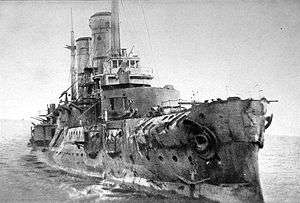
Scuttled by her crew on October 17, 1917 after sustaining heavy damage during the Battle of Moon Sound in the Baltic. The Slava had taken too many hits below the waterline and was drawing too much water to navigate the dredged channel in the strait at Moon Sound. The Slava was scuttled in the strait in an attempt to block passage by German warships pursuing the Russian fleet. The wreckage was later raised and scrapped.
- Navy:
 Russian Navy
Russian Navy
Imperatritsa Ekaterina Velikaya - later Svobodnaya Rossiya
Scuttled on June 18, 1918 in Tsemes Bay near Novorossiysk to prevent capture by the Germans. Later raised and scrapped. Her turrets and guns were salvaged and used in coastal defense batteries near Sevastopol.
- Navy:
 Russian Navy
Russian Navy
Kawachi
Destroyed by an internal explosion from unstable cordite on September 12, 1918 in Tokuyama Bay. Later raised and scrapped.
- Navy:
 Imperial Japanese Navy
Imperial Japanese Navy - Casualties: 621 men out of a crew of 1059
Potemkin - later Panteleimon, Potemkin-Tavricheskiy and Borets za Svobodu
Legend of the silver screen, the Potemkin and her crew had one of the most curious and famous histories of any battleship. Destroyed at Sevastopol in April 1919 by Interventionists in the Russian Civil War. The wreckage was later raised and scrapped.
- Navy:
 Russian Navy
Russian Navy
SMS Kaiser
Scuttled by her crew at Scapa Flow on June 21, 1919 while interned at the end of World War I. Later raised and scrapped.
- Navy:
 Kaiserliche Marine
Kaiserliche Marine
SMS Friedrich der Grosse
Scuttled by her crew at Scapa Flow on June 21, 1919 while interned at the end of World War I. Later raised and scrapped.
- Navy:
 Kaiserliche Marine
Kaiserliche Marine
SMS Kaiserin
Scuttled by her crew at Scapa Flow on June 21, 1919 while interned at the end of World War I. Later raised and scrapped.
- Navy:
 Kaiserliche Marine
Kaiserliche Marine
SMS Prinzregent Luitpold
Scuttled by her crew at Scapa Flow on June 21, 1919 while interned at the end of World War I. Later raised and scrapped.
- Navy:
 Kaiserliche Marine
Kaiserliche Marine
SMS König Albert
Scuttled by her crew at Scapa Flow on June 21, 1919 while interned at the end of World War I. Later raised and scrapped.
- Navy:
 Kaiserliche Marine
Kaiserliche Marine
SMS Grosser Kurfürst
Scuttled by her crew at Scapa Flow on June 21, 1919 while interned at the end of World War I. Later raised and scrapped.
- Navy:
 Kaiserliche Marine
Kaiserliche Marine - Relics: The ship's mast remains on the bottom of Scapa Flow.
SMS Bayern
Scuttled by her crew at Scapa Flow on June 21, 1919 while interned at the end of World War I. Later raised and scrapped.
- Navy:
 Kaiserliche Marine
Kaiserliche Marine - Relics: The ship's four main turrets detached during salvage operations, and remain at the bottom of Scapa Flow.
USS Indiana
Converted to a target for ordnance and aerial bombing tests, she was sunk in 1920. The hulk was later scrapped.
- Navy:
 United States Navy
United States Navy
USS Alabama
Converted to a target for early aerial bombing tests, she was sunk as part of the Army Air Corps bombing exercises arranged by Billy Mitchell in 1921. The hulk was later scrapped.
- Navy:
 United States Navy
United States Navy
HMS Emperor of India
Converted to a target ship, and sunk as a gunnery target in 1931. Later raised and scrapped.
- Navy:
 Royal Navy
Royal Navy
Bretagne
Destroyed by gunfire from the British battlecruiser HMS Hood and battleships HMS Barham, and HMS Resolution at Mers-el-Kebir on July 3, 1940, with the loss of 977 French sailors. Later raised and scrapped.
- Navy:
 Marine Nationale
Marine Nationale
Conte di Cavour
Torpedoed by British aircraft on November 12, 1940 during the Battle of Taranto. Raised, partially repaired, then scrapped after the war.
- Navy:
_crowned.svg.png) Regia Marina
Regia Marina
Kilkis - previously USS Mississippi
Destroyed by German aerial bombing on April 23, 1941, during the German invasion of Greece.
- Navy:
 Hellenic Navy
Hellenic Navy
Lemnos - previously USS Idaho
Destroyed by German aerial bombing on April 23, 1941, during the German invasion of Greece.
- Navy:
 Hellenic Navy
Hellenic Navy
Petropavlovsk - later Marat
Russian dreadnought. After the Revolution of 1917 renamed Marat after the French revolutionary leader Jean-Paul Marat, the ship served in the Soviet Baltic during the World War II Siege of Leningrad. She was heavily damaged at her moorings by German Stuka pilot Hans-Ulrich Rudel on September 23, 1941 and laid on ground. Three of four turrets continued in action as a floating 12-inch battery for the remainder of the siege under the restored name Petropavlovsk. She was raised in 1950 and served as the training ship Volkhov until being scrapped in 1952.
- Navy:
 Soviet Navy
Soviet Navy
HMS Queen Elizabeth
Mined and sunk by Italian frogmen in Alexandria, Egypt in on December 18, 1941 with the loss of nine men. Since she was sunk in very shallow water, she was sunk without submerging, and was able to maintain the illusion of being afloat and battle-ready. Raised and repaired, she served in the Pacific war. Was scrapped after the war.
- Navy:
 Royal Navy
Royal Navy
HMS Valiant
Mined and sunk by Italian frogmen in Alexandria, Egypt in on December 18, 1941. Since she was sunk in very shallow water, she was sunk without submerging, and was able to maintain the illusion of being afloat and battle-ready. Raised and repaired, she served in the Mediterranean and in the Pacific war. Was scrapped after the war.
- Navy:
 Royal Navy
Royal Navy
Dunkerque
Sunk twice, then scrapped after World War II. First sunk (in shallow water) by the British at the port of Mers-el-Kébir in French Algeria on July 3, 1940. Refloated, she was sunk again on November 27, 1942 during the Scuttling of the French fleet in Toulon.
- Navy:
 Marine Nationale
Marine Nationale
Strasbourg
Sunk twice, then scrapped after World War II. First sunk on November 27, 1942 during the Scuttling of the French fleet in Toulon. Refloated by the Italians, she was sunk again by US aerial attack on August 27, 1944. Raised again in 1944, she was scrapped in 1955.
- Navy:
 Marine Nationale
Marine Nationale
Jean Bart
Captured by the Germans and sunk in explosives tests on March 15, 1944. Was scrapped after the war.
- Navy:
 Marine Nationale
Marine Nationale
Provence
Scuttled twice, then scrapped in 1949. First sunk on November 27, 1942 during the Scuttling of the French fleet in Toulon. Raised by the Germans and recaptured by the Allies, she was sunk again as a blockship after D-Day.
- Navy:
 Marine Nationale
Marine Nationale
SMS Zähringen
Scuttled twice, then scrapped in 1949. Originally a battleship in the Kaiserliche Marine, she had been converted to serve as a target ship in the Reichsmarine and Kriegsmarine. First sunk in an air raid on Gotenhafen (today Gdynia) on December 18, 1944 and sank in shallow water. Sunk a second time after being refloated and towed to the harbor entrance, where she was scuttled as a blockade ship on March 26, 1945. The wreck was raised and scrapped in 1949–1950.
- Navy:
.svg.png) Kriegsmarine
Kriegsmarine
Impero
Launched but never completed. Sunk by Allied bombers on February 20, 1945. Raised in 1947 and scrapped by 1950.
- Navy:
_crowned.svg.png) Regia Marina
Regia Marina
Settsu
Destroyed by US aircraft on July 24, 1945. This early semi-Dreadnaught had been converted to a radio-controlled target ship.
- Navy:
 Imperial Japanese Navy
Imperial Japanese Navy
Ise

Destroyed by US aircraft on July 28, 1945. Sunk at her moorings in Kure harbor. Later scrapped in place.
- Navy:
 Imperial Japanese Navy
Imperial Japanese Navy
Hyūga

Destroyed by US aircraft on July 24, 1945. Sunk at her moorings in Kure harbor. Later raised and scrapped.
- Navy:
 Imperial Japanese Navy
Imperial Japanese Navy
Haruna

Destroyed by US aircraft on July 28, 1945. Sunk at her moorings in Kure harbor. Later raised and scrapped
- Navy:
 Imperial Japanese Navy
Imperial Japanese Navy
Novorossiysk - previously Giulio Cesare
After World War II, the Italian battleship Giulio Cesare was ceded to the Soviet Union as compensation for war damages. Sunk on October 29, 1955 while moored in Sevastopol Bay, probably by a German mine left over from World War II. Several German mines were found near the wreck site after the sinking.
- Navy:
 Soviet Navy
Soviet Navy - Loss: 609 men
- Location: Sevastopol Bay in Black Sea
- Condition: Novorossiysk was raised in May 1957 and scrapped.
See also
External links
- USS Maine (Navy Historical Center)
- USS Maine Memorial at Arlington National Cemetery
- http://www.naval-history.net/WW1NavyFrench.htm
- http://www.naval-history.net/index.htm
References
- ↑ http://www.navweaps.com/index_lundgren/Kirishima_Damage_Analysis.pdf
- ↑ Neal Bascomb, Red Mutiny: Eleven Fateful Days on the Battleship Potemkin, pp. 286-99
- ↑ Neal Bascomb, Red Mutiny: Eleven Fateful Days on the Battleship Potemkin, pp. 286-99
- ↑ Stephen McLaughlin, Russian & Soviet Battleships, p. 121
- Jane's Fighting Ships of World War I (Jane's Publishing, London, 1919)
- Robert Gardiner, ed., Conway's All the World's Fighting Ships 1860-1905 (Conway Maritime Press, London, 1979)
- Hanson W. Baldwin, World War I: An Outline History (Harper and Row, New York, 1962)
- Robert K. Massie, Castles of Steel (Ballantine Books, 2003)
- Pleshakov, Constantine, The Tsar's Last Armada: The Epic Voyage to the Battle of Tsushima. (2002). ISBN 0-465-05792-6.
- Corbett, Julian, Sir, Maritime Operations in the Russo-Japanese War 1904-1905. (1994). ISBN 1-55750-129-7.
- Semenov, Vladimir, Capt., The Battle of Tsushima. (1912). E. P. Dutton & Co.